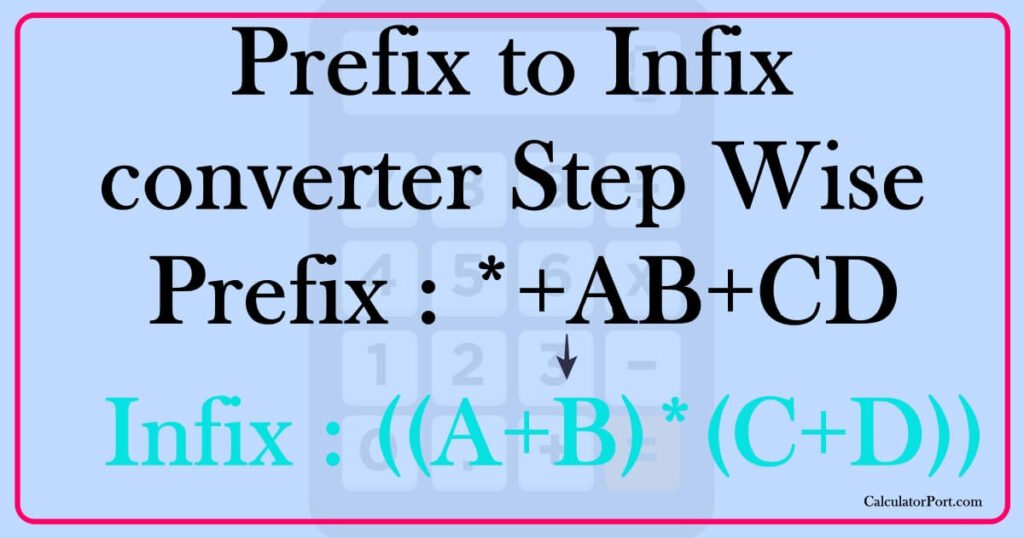Infix to Prefix converter
Infix:
Prefix:
Step by step Evaluation for ““ expression
- 1. Reversed string:
- 2. Postfix of : (see table)
- 3. Reversed string of :
Postfix:
Step by step Evaluation for ““ expression
Step by Step Evaluation for postfix expression
| Input String | Output Stack | Operator Stack |
|---|
An infix expression is a type of arithmetic expression that is written using the standard notation for operators (e.g. “*” for multiplication, “+” for addition). On the other hand, a prefix expression is a type of arithmetic expression in which the operator symbols come before the operands (numbers).
Here is an example of an infix expression and its equivalent prefix expression:
Infix: 2 + 3 Prefix: + 2 3
To convert an infix expression to a prefix expression, you can use the following steps:
- Reverse the infix expression
- Replace all occurrences of “(” with “)” and all occurrences of “)” with “(“
- Convert the reversed infix expression to a postfix expression using the steps outlined in my previous response
- Reverse the postfix expression to obtain the prefix expression



The infix to prefix conversion is awesome